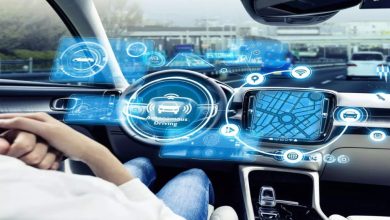UP mandates CCTV in school buses
Date: January 02, 2024. — In a bid to ensure the safety and security of school children, the Uttar Pradesh government has made it mandatory for all school buses and vans to install CCTV cameras. The notification was issued by the principal secretary (transport) Lakko Venkateshwarlu.
According to a recent notification, the compulsory installation of CCTV cameras in school vehicles aligns with Rule 222 of the Uttar Pradesh Motor Vehicle Rules, 1998. This rule was amended by the government on May 2, 2022. This rule is slated to be enforced three months from the date of its publication in the Gazette. The rule outlines specific features and guidelines for school vehicles. These include painting them yellow, prominently displaying the words ‘School Bus’ or ‘School Van’, and equipping them with fire extinguishers, GPS tracking, horizontal window grills, and secure door locks. Additionally, the rule covers other safety measures for school vehicles. Furthermore, the vehicles must provide sufficient space inside for keeping school bags, prohibiting their placement on roof carriers or externally. Lastly, the rule prohibits the use of pressure horns, multi-tone horns, alarm bells, or sirens on these vehicles.
In addition, the law stipulates that the driver of a school vehicle must wear black shoes, light blue pants, and a light blue shirt. They must also have a valid license to operate LMV-Transport vehicles for at least four years. The shirt should bear the driver’s name and ID. The driver must carry a comprehensive list of all the kids being transported in the automobile. This list should include their name, class, home address, blood type, sites of stoppage, route map, etc.
According to the rule, if a designated person, acknowledged by both the school and parents, fails to pick up a kindergarten student from the designated points, the child must be returned to the school, and the parents must be notified. Additionally, the responsibility for adhering to this rule and installing CCTV cameras in the vehicles lies with school managers and vehicle owners. The transport department will conduct enforcement drives to verify compliance and take appropriate action against any violations.
Most parents and schools support the idea. They see it as an essential precaution to shield the kids from accidents or criminal activity. Amity International School’s principal, Renu Singh, stated that all of the school’s buses and vans have CCTV cameras installed. The film is stored for a minimum of two weeks for security reasons. The head of Brahmananda Public School, Aparajita Dasgupta, stated that CCTV cameras are crucial for keeping an eye on staff and student safety. Furthermore, in the modern world, they play a significant role in enhancing security measures.
According to the official data, Gautam Budh Nagar has 1,784 registered school buses and Ghaziabad has nearly 1,500. The details of the total vans engaged in schools are not available. In July 2023, six persons, including two children, were killed. Moreover, this tragic incident occurred after a school bus collided with an SUV on the Delhi-Meerut Expressway. The bus driver was coming from the wrong direction after filling CNG from Delhi near Ghazipur.
The Uttar Pradesh government has mandated the installation of CCTV cameras in school vehicles. This directive is in accordance with the Supreme Court of India’s 2013 guidelines for school bus safety. This decision aligns with broader measures, such as the installation of CCTV cameras on school premises and a 60-day retention period for footage. There is also the provision to hand it over to the police for investigative purposes. Moreover, the UP government’s move mirrors similar initiatives in states like Karnataka. In Karnataka, the Bangalore Metropolitan Corporation has installed 500 school bus cameras. The Road and Transport Authority (RTA) of India emphasizes the manifold benefits of such regulations, including enhanced comfort, security, and safety for students and parents, timely school arrivals, reduced pollution from vehicle emissions, and alleviation of traffic congestion.



